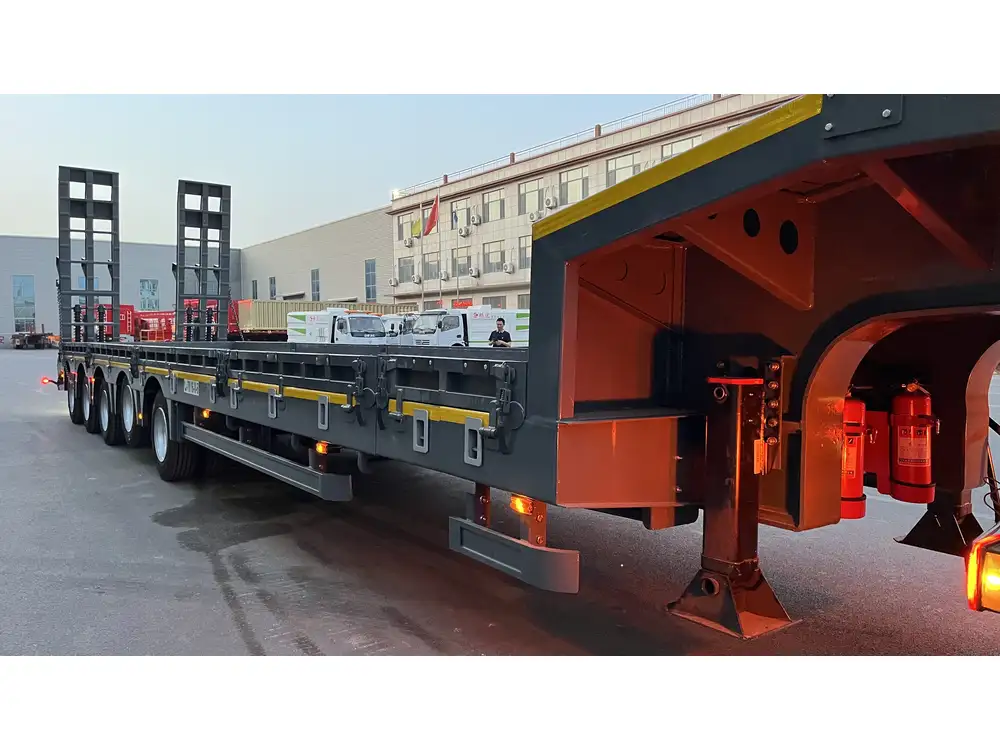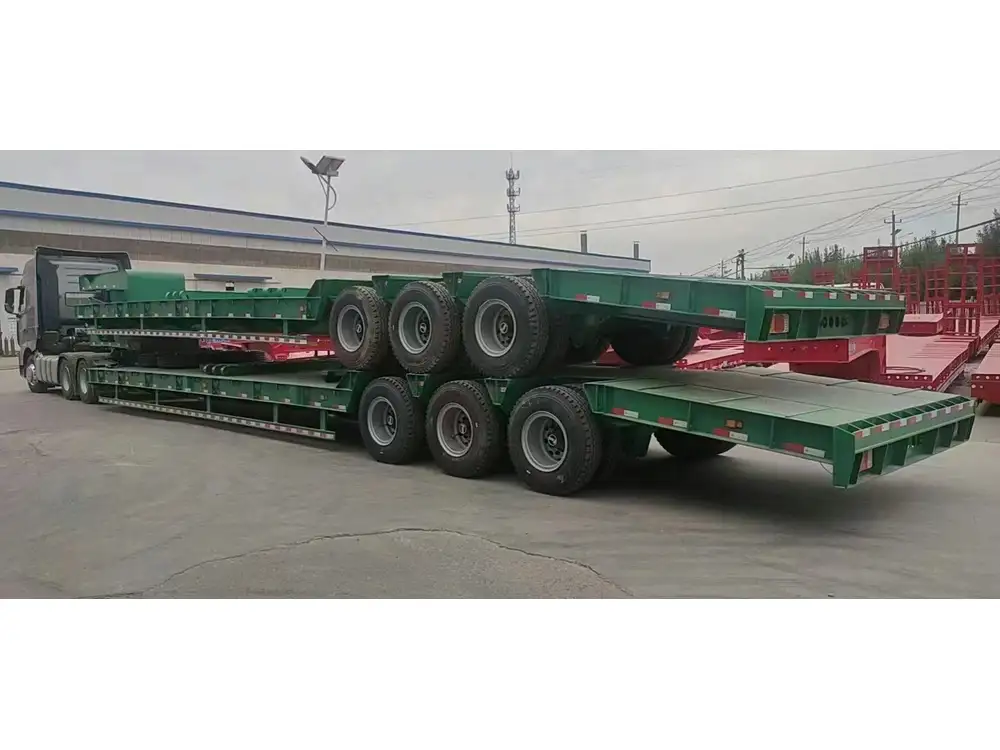Unhooking a semi-trailer is a skill that every truck driver must master to ensure safety and efficiency in their operations. Whether you’re a seasoned trucker or new to the industry, understanding the proper techniques and procedures for unhooking a semi-trailer can prevent accidents, save time, and enhance overall productivity. In this detailed guide, we’ll walk you through the necessary steps, offer practical tips, and highlight common mistakes to avoid—all designed to empower you to unhook a semi-trailer with confidence.
Understanding the Basics
Before delving into the procedures, it’s essential to understand the components involved in the process of unhooking a semi-trailer. A semi-trailer is typically connected to a tractor unit via a fifth wheel coupling system. The coupling locks the trailer in place while allowing articulation necessary for maneuvering.
Key Components Involved
| Component | Description |
|---|---|
| Fifth Wheel | The plate on the tractor that connects to the trailer’s kingpin. |
| Kingpin | A heavy steel pin on the trailer that fits into the fifth wheel. |
| Release Handle | A lever that, when engaged, releases the kingpin from the fifth wheel. |
| Stabilizing Legs | Supports under the trailer that prevent it from tipping when unhooked. |
By familiarizing yourself with these parts, you’ll be better prepared for the unhooking process.

Step-by-Step Procedure to Unhook a Semi-Trailer
Step 1: Preparation
Inspect the Environment: Before unhooking, ensure that the surroundings are safe and clear of obstacles. Check the ground for stability and ensure that your vehicle is on a level surface.
Check Equipment: Inspect both the tractor and trailer for any visible issues. Pay special attention to brakes and wiring.
Engage the Trailer Brakes: Apply the parking brakes on the trailer to ensure it remains stationary during the unhooking process.
Step 2: Lowering the Trailer
Position the Truck: Align the truck such that the tractor is directly in front of the trailer, ensuring you have adequate space to maneuver.
Release the Pressure: Engage the release handle on the fifth wheel to relieve pressure from the lock. This is crucial for a smooth unhooking process.
Lower the Trailer Landing Gear: Crank down the landing gear until it touches the ground fully. This provides the stability necessary for the next steps and prevents the trailer from tipping.

Step 3: Disconnecting the Trailer
Loosen and Unplug Electrical Connections: Carefully disconnect any electrical connectors between the tractor and trailer. Check to ensure the cables are housed properly to prevent snagging.
Unhook Air Lines: If your trailer utilizes air brakes, disconnect the air lines. Ensure that you handle these with care, checking for leaks or signs of wear.
Engage the Release Handle: With the trailer brakes still engaged, fully pull the release handle on the fifth wheel to allow the kingpin to disengage.
Move the Truck Forward: Slowly drive the tractor forward while observing from your mirrors. The kingpin should release from the fifth wheel as you pull away. It’s crucial to maintain a steady speed—not too fast or too slow.
Step 4: Finalizing the Process
Secure the Trailer: Once the trailer is unhooked, check the stability of the landing gear. If it is not properly set, make adjustments.
Inspect the Area: After unhooking, inspect the trailer and area again for any issues, such as fluid leaks or misplaced equipment.
Complete Necessary Paperwork: If applicable, fill out any paperwork related to the delivery or unhooking process required by your company or clients.
Common Mistakes to Avoid
Navigating the unhooking process can be fraught with pitfalls. Here’s a list of common mistakes to avoid ensuring safety and efficiency:
Neglecting Gear Maintenance: Always check that all gears, including the landing gear and fifth wheel, are maintained properly.
Ignoring Road Conditions: Weather can impact safety. Slippery surfaces require extra caution during unhooking.
Skipping Safety Checks: Always conduct a thorough inspection before and after unhooking.
Improper Trucker Communication: Ensure that any necessary team members are aware of your actions to minimize miscommunication and accidents.

Implementing Best Practices
To make unhooking more efficient and safe, consider implementing these best practices:
Regular Training
Investing in ongoing training for your drivers can ensure that they remain proficient in unhooking techniques. This training should include:
- Hands-On Experience: Regular practical drills help solidify skills.
- Safety Protocols: Refresher courses on safety procedures can prevent accidents.
Equipment Upkeep
Conduct regular maintenance on all components, including the fifth wheel, kingpin, and air lines, to prevent any functional issues during the unhooking process. Establish a routine check system to follow, ensuring any disturbances are addressed promptly.
| Maintenance Activity | Frequency |
|---|---|
| Inspect Fifth Wheel Plate | Daily |
| Check Landing Gear | Before each use |
| Review Electrical Connections | Weekly |
| Test Air Lines | Monthly |

Articles of Interest
For those interested in delving deeper into the realm of semi-trailers and dealing with transport logistics, consider these topics:
- The Importance of Maintaining Your Semi-Trailer
- Understanding the Different Types of Semi-Trailers and Their Uses
- Common Safety Standards in Semi-Trailer Transportation
- The Role of Technology in Modern Unhooking Techniques
By expanding your knowledge and skills in these areas, you can significantly enhance your operational efficiency and safety.
Conclusion
The ability to unhook a semi-trailer efficiently and safely is essential for any truck driver. By understanding the process, employing best practices, meticulously maintaining your equipment, and avoiding common mistakes, you place yourself in a strong position to operate effectively within the transportation industry.
Ultimately, as you gain experience unhooking semi-trailers, you’ll find that confidence grows with practice. Keeping your skills sharp, coupled with a proactive approach to safety and maintenance, will set you up for success in this critical aspect of your driving responsibilities. Stay vigilant, stay informed, and always strive for excellence on the road.



